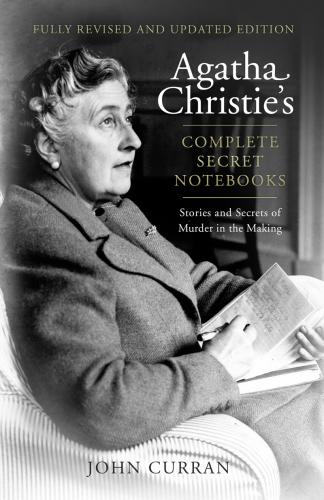In addition to this list, Christie makes various allusions to her fellow Detection Club members in a range of works. Partners in Crime, Christie’s 1929 Tommy and Tuppence collection of short stories, sees the Beresfords investigating their cases in the style of various detectives. She pastiches Berkeley in ‘The Clergyman’s Daughter’
An article Christie wrote for the Ministry of Information in 1945, ‘Detective Writers in England’, is also of note. Here the writers featured are John Dickson Carr, H.C. Bailey, Ngaio Marsh, Austin Freeman and Margery Allingham and Sayers, the only writer common to the article and Notebook 41, although all were members of The Detection Club. This may be due to the fact that Christie had more dealings with Sayers, mostly during the planning of the collaborative titles above, all of which were masterminded by Sayers. Chapter 6 of The Body in the Library also mentions Sayers, Bailey and Dickson Carr (as well as Christie herself); and ‘The Flock of Geryon’, the tenth Labour of Hercules, mentions Sherlock Holmes, Mr Fortune, the creation of Bailey, and Sir Henry Merrivale, the creation of Dickson Carr. Carr’s The Burning Court is also a minor clue in Evil under the Sun and the same writer gets a further mention in The Clocks.
A single sentence each in Notebooks 18 and 35 also mentions the Detection Club, both with the same idea:
Guest night at the Det[ection] Club during ritual – Mrs. O[liver]’s 6 guests
Detection Club Murder – Mrs Oliver – her two guests – someone killed when the Ritual starts
Guest Night was, not surprisingly, an evening when members of the club could invite a guest for dinner. The ‘ritual’ was the initiation ceremony, involving the swearing of an ‘oath’ with Eric the Skull standing in for the Bible. As a detective novelist Mrs Oliver would, of course, have been a member of the club.
Other Crime Writers in the Notebooks
Apart from the ‘13 at Dinner’ list in Notebook 41, Agatha Christie makes other references to her fellow crime writers. The following is a selection of those mentioned:
Apart from his appearance in connection with the Detection Club, he is also referred to in Notebook 41. The following concerns a contribution to Bentley’s anthology A Second Century of Detective Stories, published in 1938, where ‘The Case of the Distressed Lady’ from Parker Pyne Investigates represents Christie
A HP story for Bentley
The creator of Father Brown, the immortal priest detective, and first president of the Detection Club, Chesterton contributed to their collaborative novel The Floating Admiral. The reference in Notebook 66 is a reminder to provide a short story for him, presumably for his 1935 anthology A Century of Detective Stories. She did not write a new one but instead provided ‘Sing a Song of Sixpence’.
Ideas for G. K. C.
In Notebook 52 there are two references, both very similar, to John Creasey, British crime writer of almost 600 books. Hugely prolific under a variety of pseudonyms, he was also a founder of the Crime Writers Association. In The Clocks, the typewriting agency, which is the focus of much of the novel, does some work for Creasey-like authors.
Miss M[artindale] is chief agent – Sec[retary] to Creasey – who wrote spy stories
Twice during the plotting of Mrs McGinty’s Dead Christie mentions Murder by Latitude, a novel by this largely forgotten US writer. Murder by Latitude features a typical Christie setting, aboard a ship from which contact with land has been severed. Although not mentioned by name, there are a few of his novels in the library at Greenway House.
Atmosphere like Murder by Latitude – some people – amongst them a Murderer
Mason was the creator of Inspector Hanaud. The reference in Notebook 35 is to At the Villa Rose, published in 1910, a case involving the death of an elderly woman and the suspicion surrounding her companion. While plotting One, Two, Buckle my Shoe Christie reminds herself of it:
A murder discovered (woman? Elderly? Like Villa Rose) Clue – a shoe buckle
The ‘inventor’ of the detective story when he published ‘The Murders in the Rue Morgue’ in 1841. ‘The Purloined Letter’, another famous case for his detective Auguste Dupin, turns on the idea of hiding in plain sight and Christie’s reference is in connection with a fortune hidden not in but on an envelope, as stamps. She used this plot device in the short story ‘Strange Jest’ and in Spider’s Web. The concept of hiding in plain sight is also used in ‘The Nemean Lion’.
Stamps – fortune left in them – on old letters in desk – ‘Purloined Letter’ mentioned – they look in obvious envelope – really stamps on it
